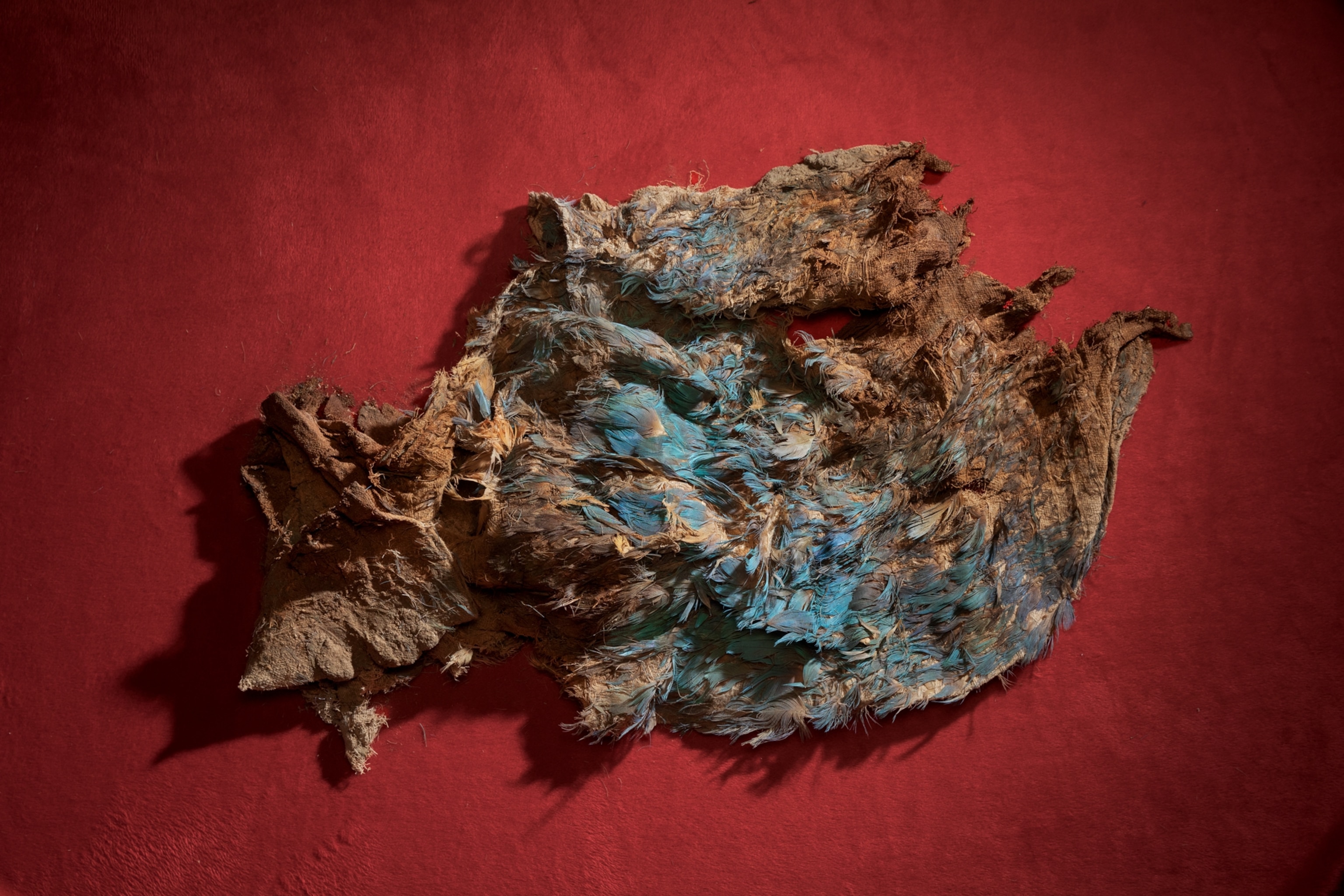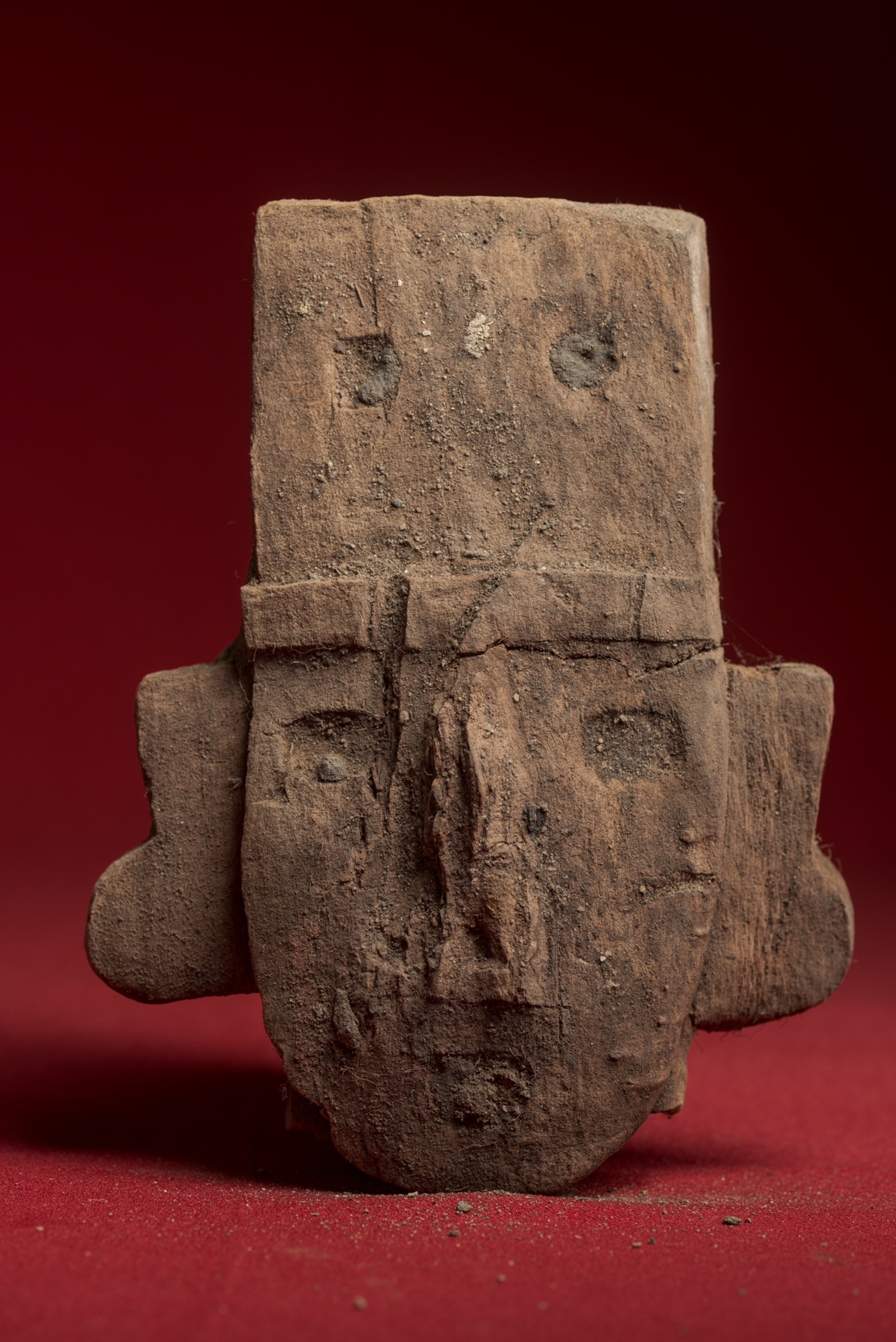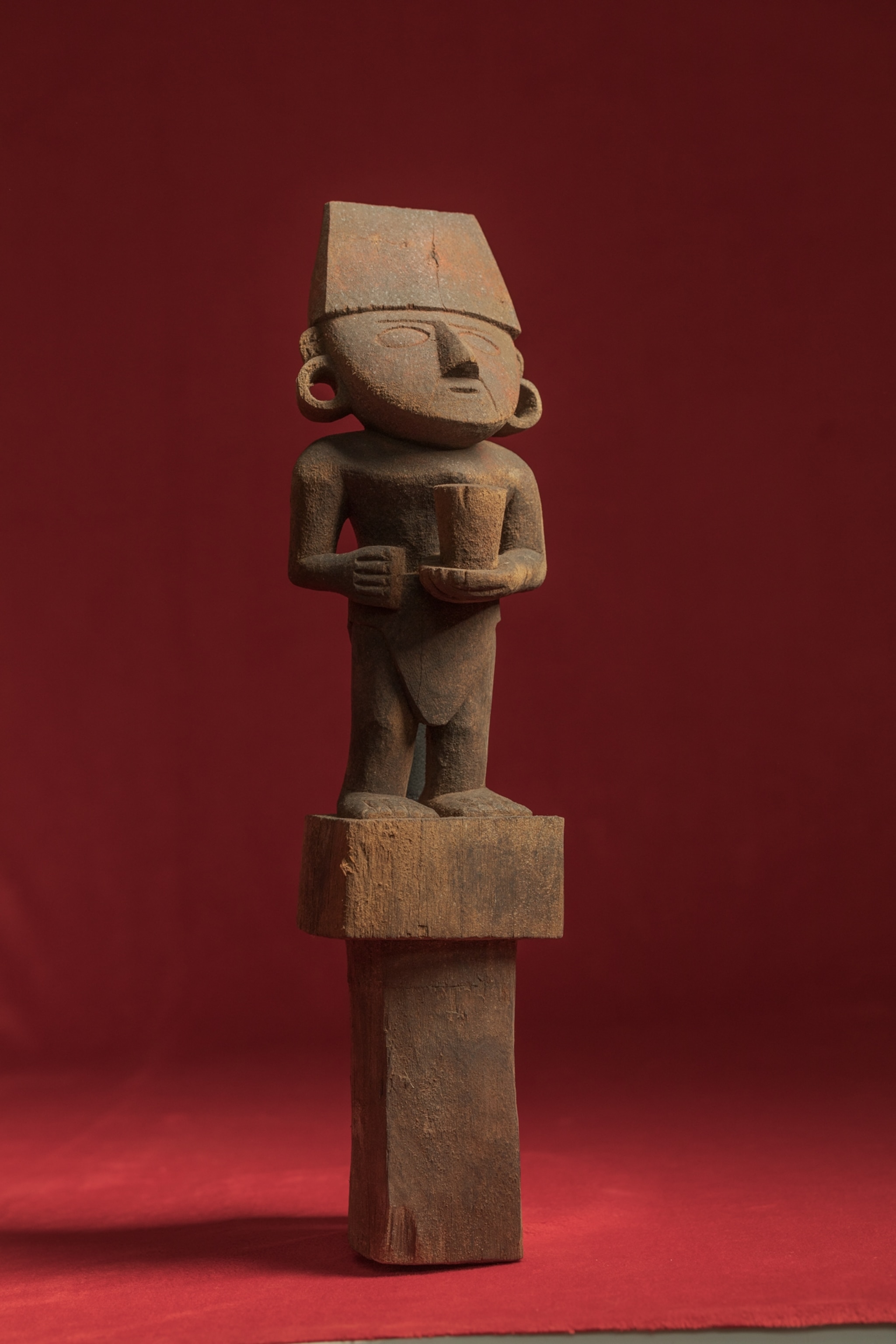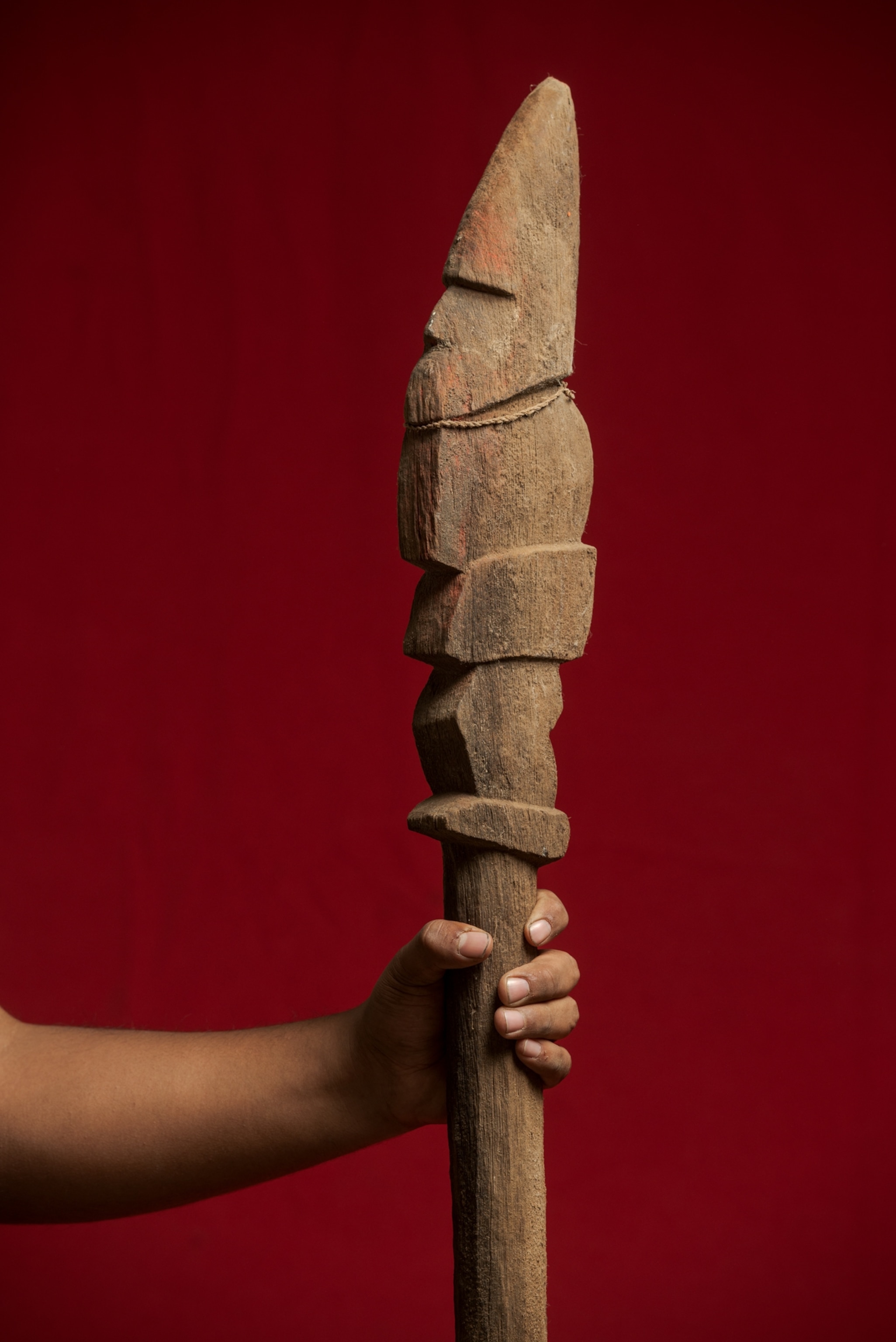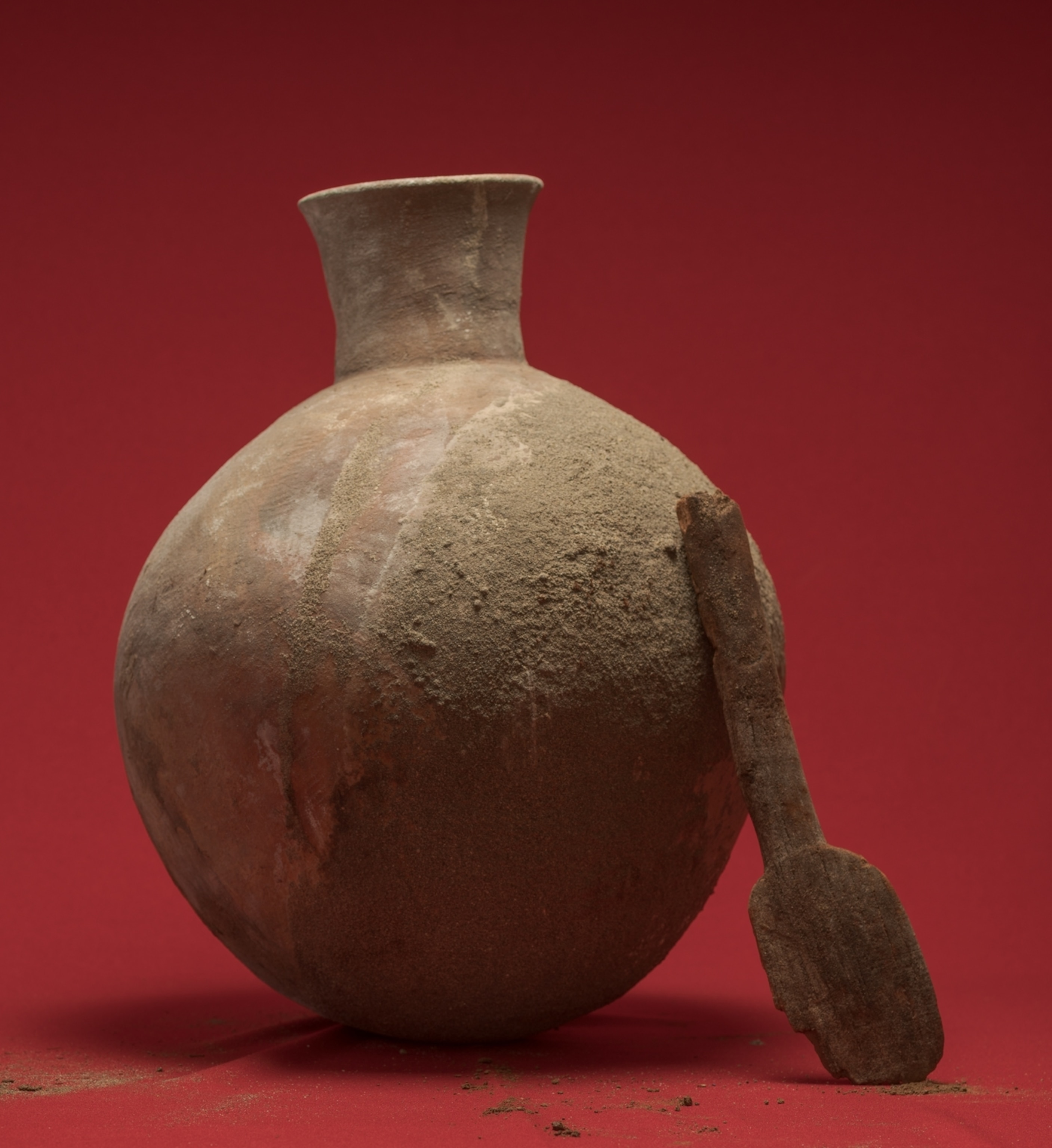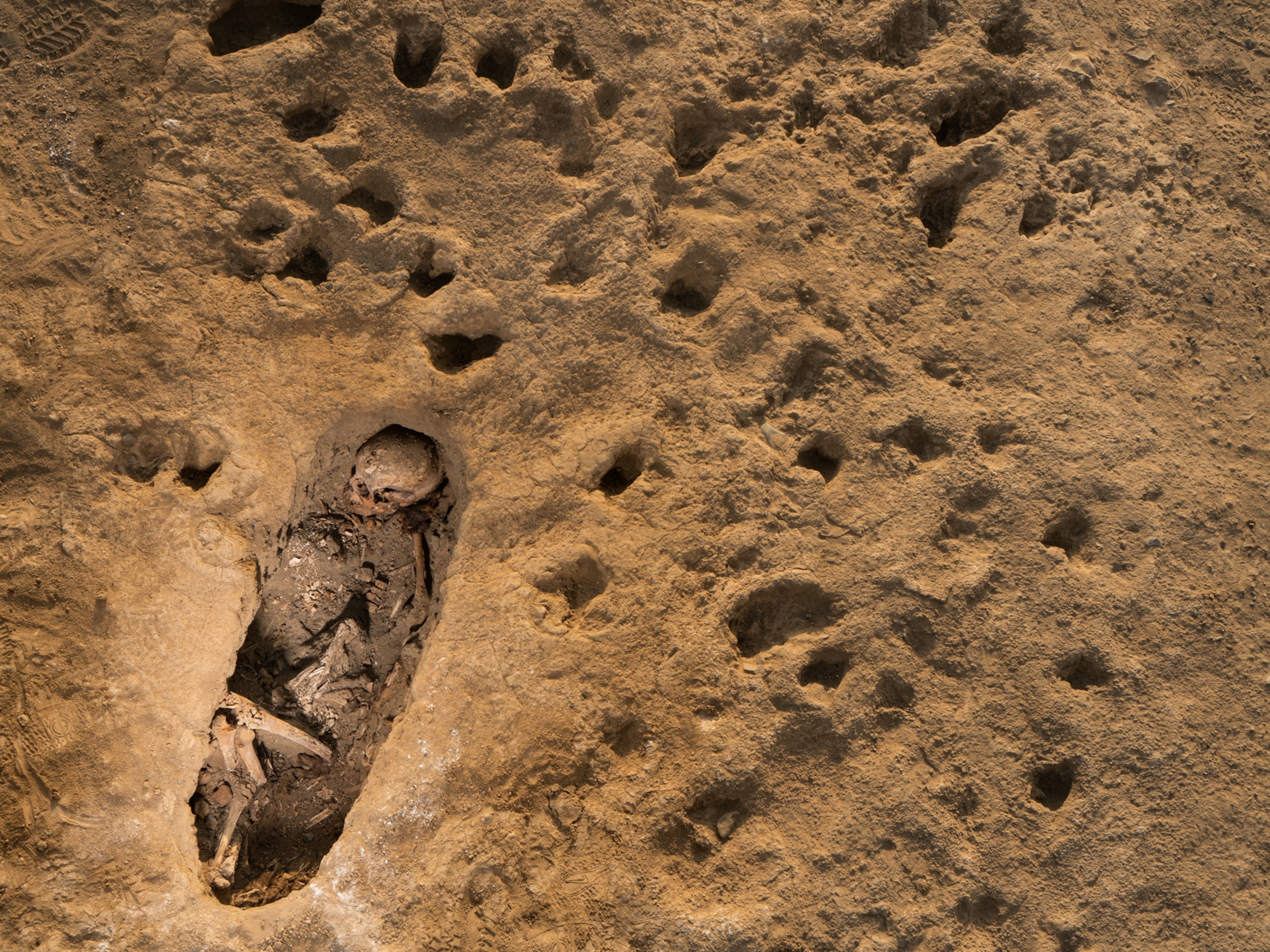What made this ancient society sacrifice its own children?
Some 500 years ago, the Chimú in what is now Peru ritually killed hundreds of their young in the largest mass child sacrifice events known in world history. Now archaeologists are trying to understand why.
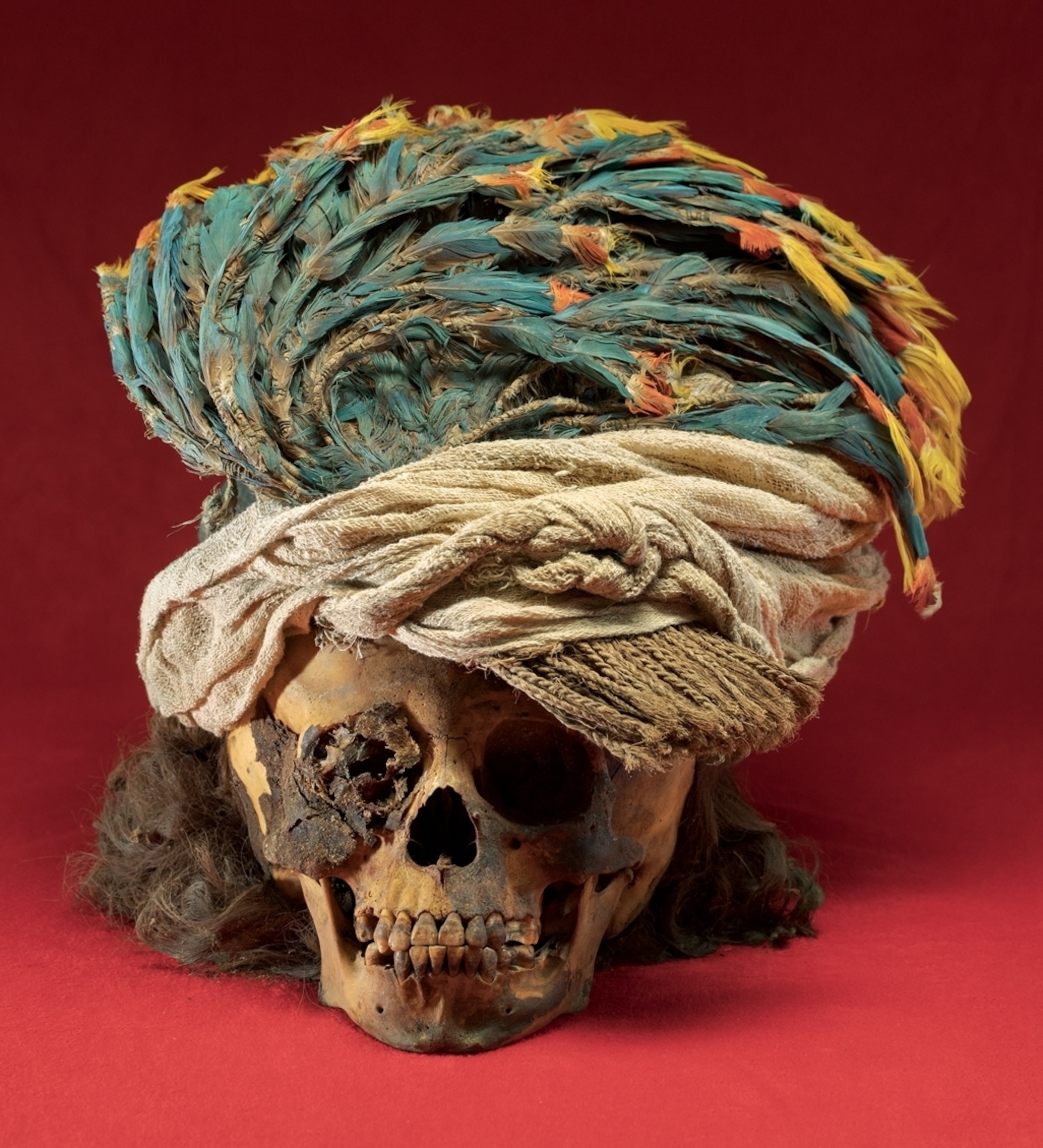
The young victim lies in a shallow grave in a vacant lot strewn with trash. It’s the Friday before Easter here in Huanchaquito, a hamlet on the north coast of Peru.
The throb of dance music, drifting up from seaside cafés a few hundred yards to the west, sounds eerily like a pulsing heart. It’s accompanied by the soft chuf, chuf of shovels as workers clear away broken glass, plastic bottles, and spent shotgun shells to reveal the outline of a tiny burial pit cut into an ancient layer of mud.
Two college students—archaeologists in training, wearing hospital scrubs and masks—splay on their stomachs on either side of the grave and begin digging with trowels.
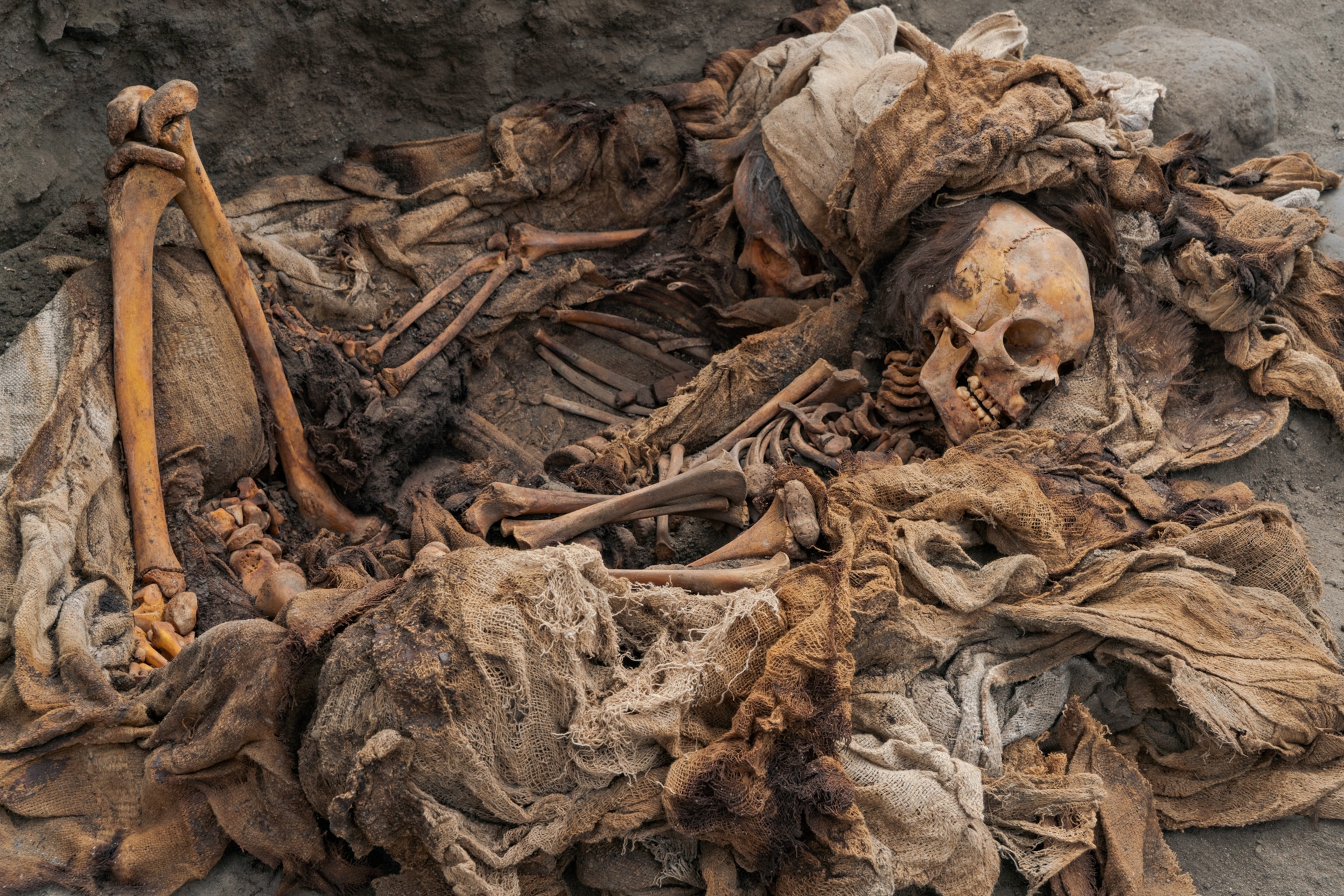
The first thing to appear is the crest of a child’s skull, topped with a thatch of black hair. Switching from trowels to paintbrushes, the excavators carefully sweep away the loose sand, exposing the rest of the skull and revealing skeletal shoulders poking through a coarse cotton shroud. Eventually the remains of a tiny, golden-furred llama come into view, curled alongside the child.
Gabriel Prieto, a professor of archaeology from the National University of Trujillo, peers into the grave and nods. “Ninety-five,” he announces. He’s keeping a running tally of victims, and this one, labeled E95, is the 95th dug up since he first began investigating the mass burial site in 2011. The grim count from this and a second sacrifice site nearby will ultimately add up to 269 children between the ages of five and 14 and three adults. All of the victims perished more than 500 years ago in carefully orchestrated acts of ritual sacrifice that may be unprecedented in world history.
“This is something completely unexpected,” exclaims Prieto, shaking his head in bewilderment. The words have become a kind of mantra as the archaeologist and father struggles to make sense of the harrowing discovery at a site called Huanchaquito-Las Llamas. In our time and culture, the violent death of even one child rends all but the most callous hearts, and the specter of mass murder horrifies every healthy mind. And so, we wonder: What desperate circumstances might account for an act that’s unthinkable to us today?
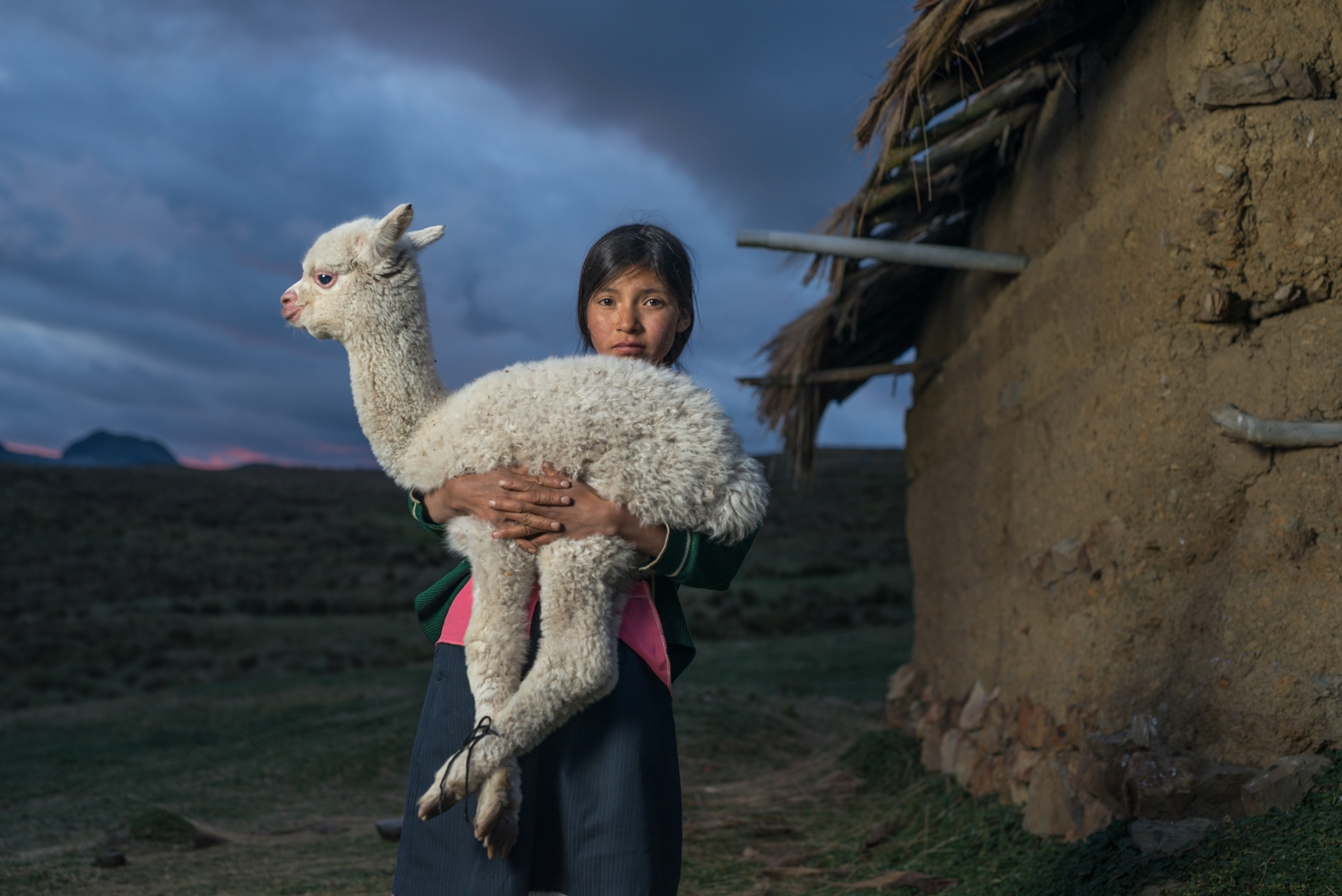
Archaeologists have found evidence of human sacrifice in all parts of the world. Victims may number in the hundreds, and often they’re deemed to have been prisoners of war, or casualties of ritual combat, or retainers killed upon the death of a leader or the construction of a sacred building. Ancient texts, including the Hebrew Bible, attest to the practice of child sacrifice, but clear evidence of mass killings of children is rare in the archaeological record. Until the discovery at Huanchaquito (pronounced wan-cha-KEE-toe), the largest known child sacrifice site in the Americas—and possibly the entire world—was at Templo Mayor in the Aztec capital of Tenochtitlán (modern-day Mexico City), where 42 children were slain in the 15th century.
Prieto grew up in Huanchaco (pronounced wan-CHA-co), the town that encompasses Huanchaquito. As a child, he hunted for beads outside the 16th-century Spanish colonial church that perches on the town’s highest hill. He recalls spending afternoons on the southern edge of town exploring the adobe ruins of Chan Chan, the ancient capital of the Chimú people. At its peak in the 15th century, Chan Chan was one of the largest cities in the Americas, the seat of power for an empire that stretched some 300 miles along the Peruvian coast.
Those childhood experiences inspired Prieto to become an archaeologist, and while earning a doctorate from Yale, he returned to his hometown to excavate a 3,500-year-old temple.
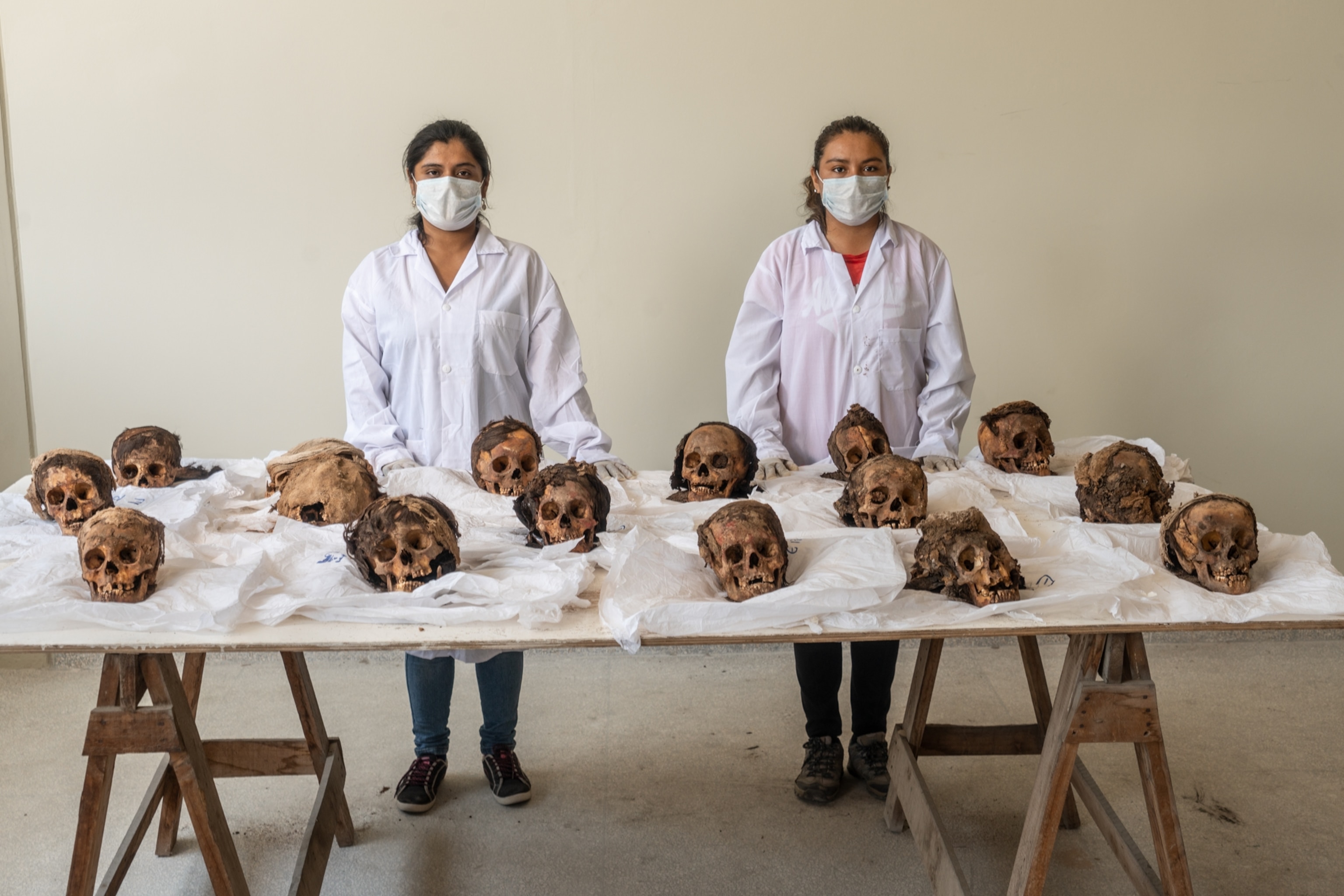
Then in 2011 the owner of a local pizza shop shared startling news: His children—and the neighborhood dogs—were finding human bones sticking out of the sand of a nearby vacant lot. He implored the archaeologist to investigate.
At first Prieto thought the site was simply a long-forgotten cemetery. But after recovering the remains of several children wrapped in shrouds—remains that radiocarbon analysis dated to between A.D. 1400 and 1450—the archaeologist realized that he had stumbled onto a much bigger discovery.
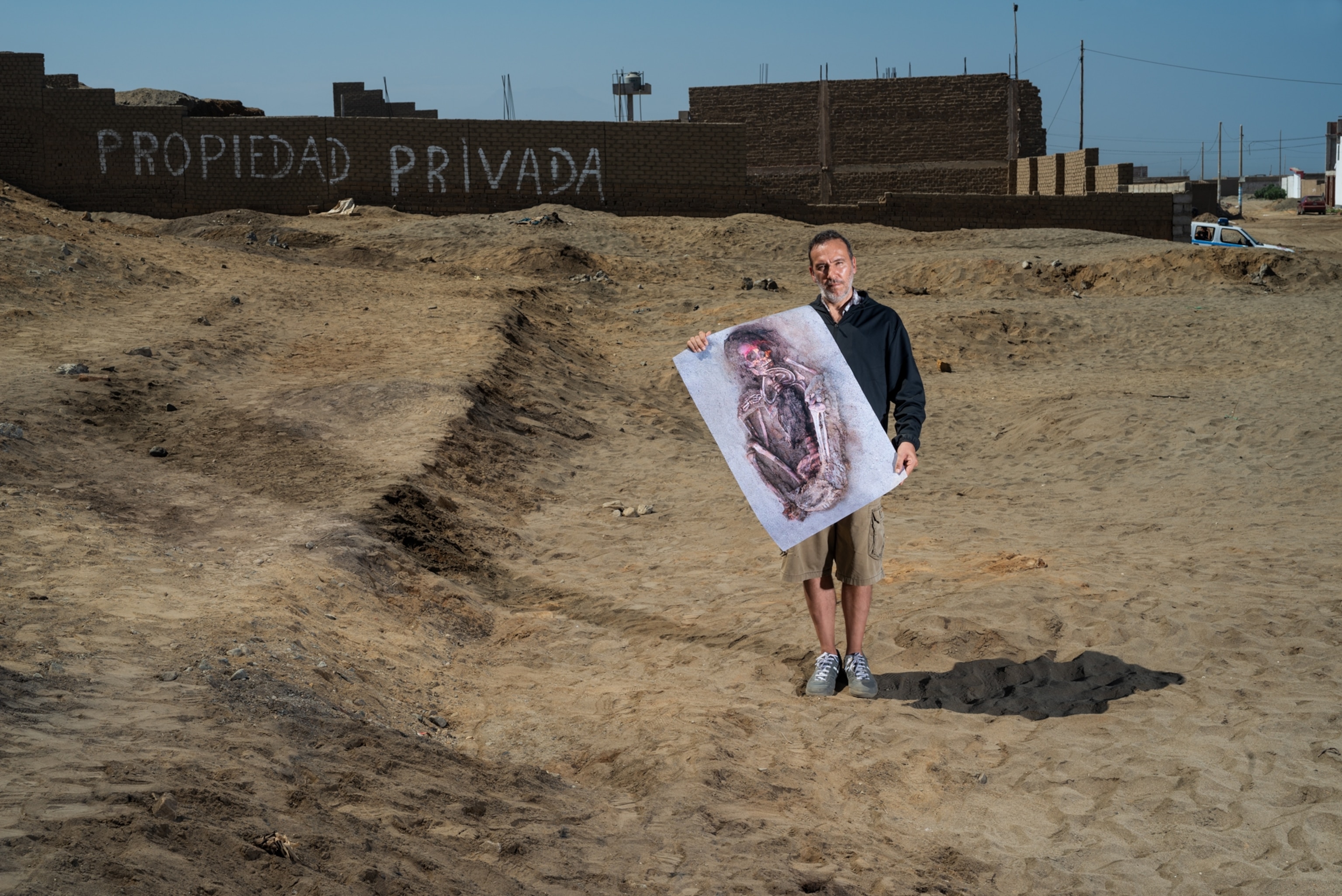
The burials, Prieto noticed, weren’t typical of the Chimú. The children were interred in unusual positions—prone on their backs or curled on their sides instead of sitting upright, as was customary—and they lacked the adornments, pottery, and other grave goods commonly found in Chimú burials.
Instead, many were buried alongside very young llamas and possibly alpacas. As vital sources of food, fiber, and transport, these Andean animals were among the Chimú’s most valuable assets. And finally there was this: Many of the children and animals had visible cut marks across their sternum and ribs.
To help make sense of the clues, Prieto called John Verano, a biological anthropologist and forensic expert at Tulane University. Verano has decades of experience analyzing physical evidence of ritual violence in the Andes, including a 13th-century Chimú massacre of some 200 men and boys at the site of Punta Lobos.
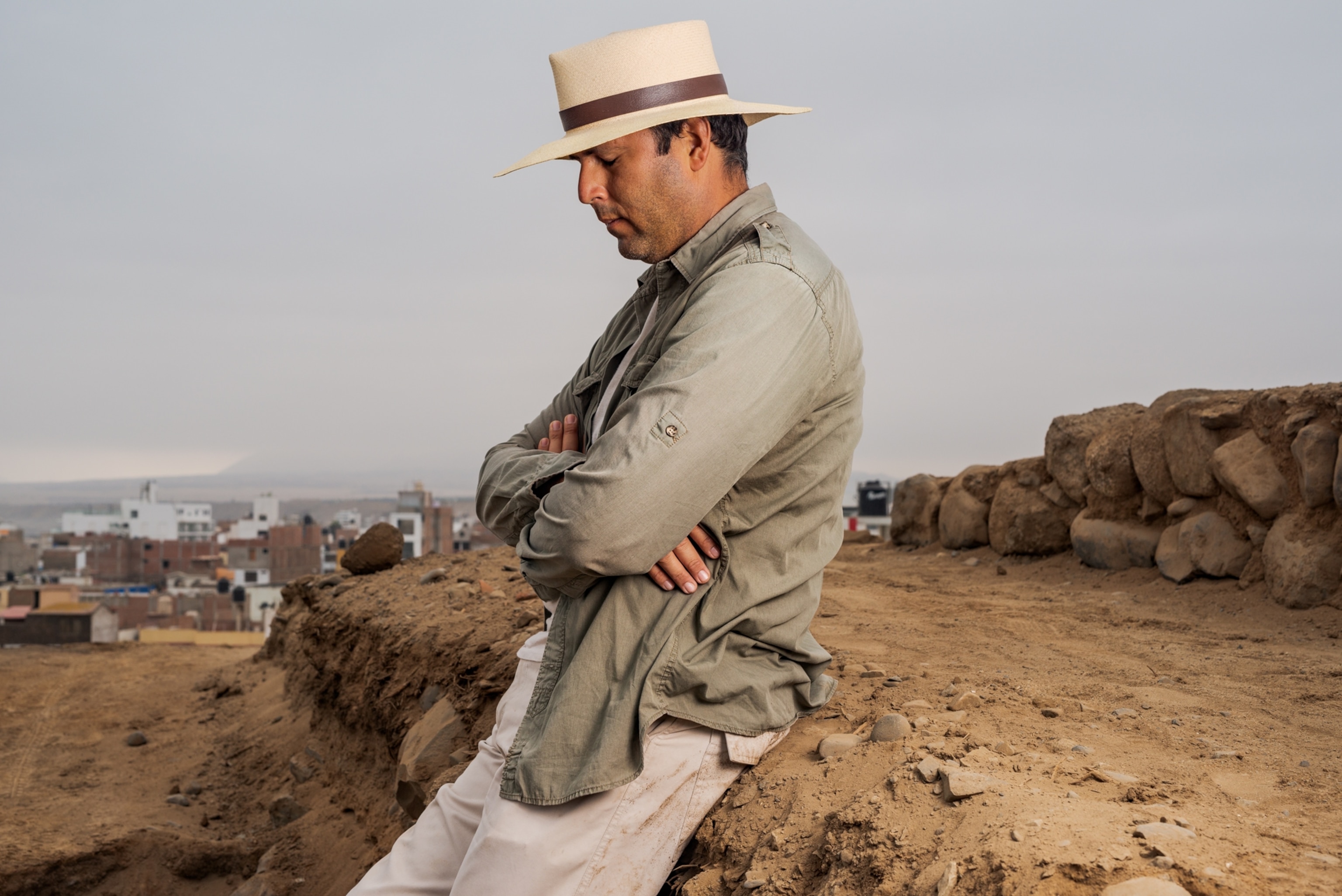
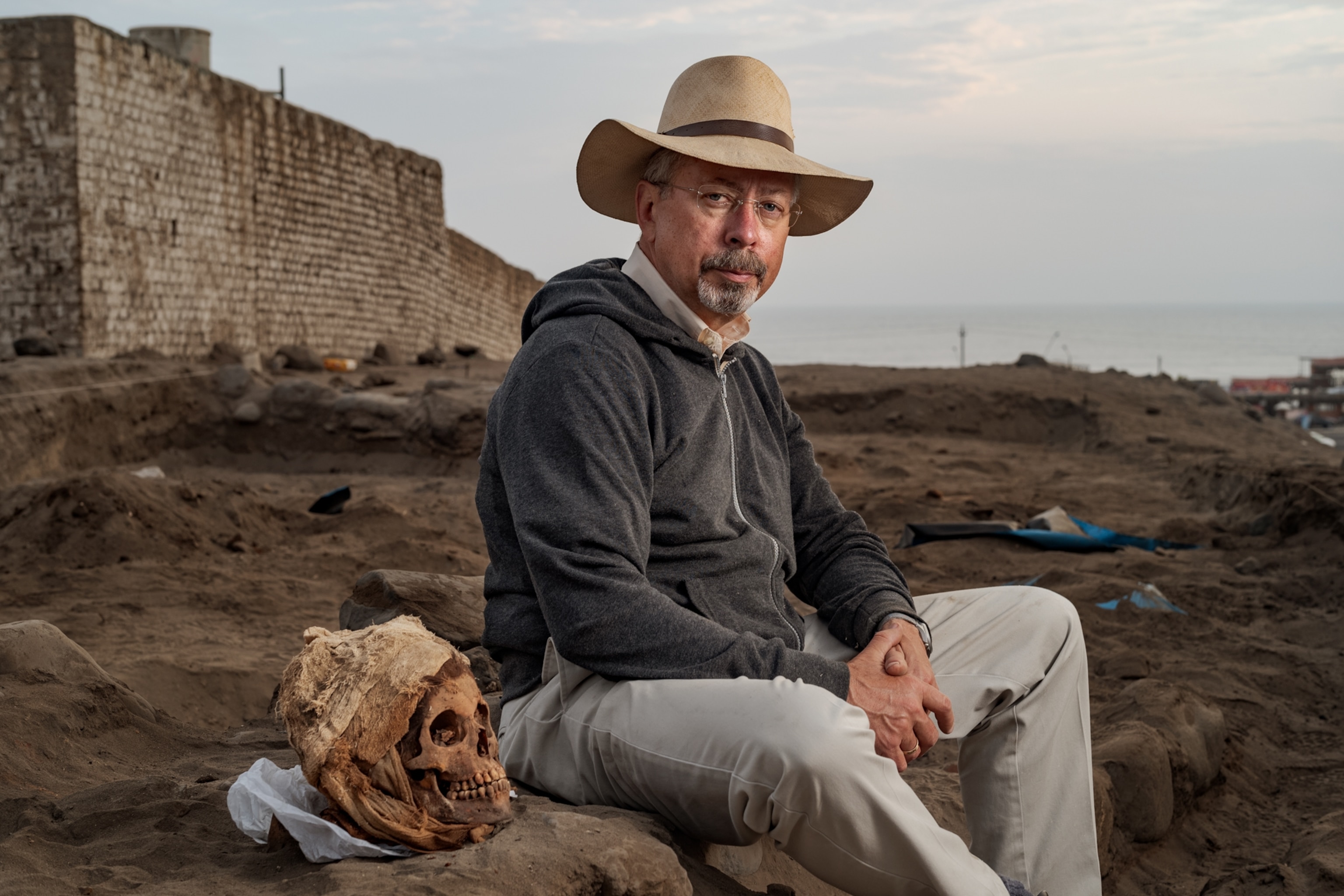
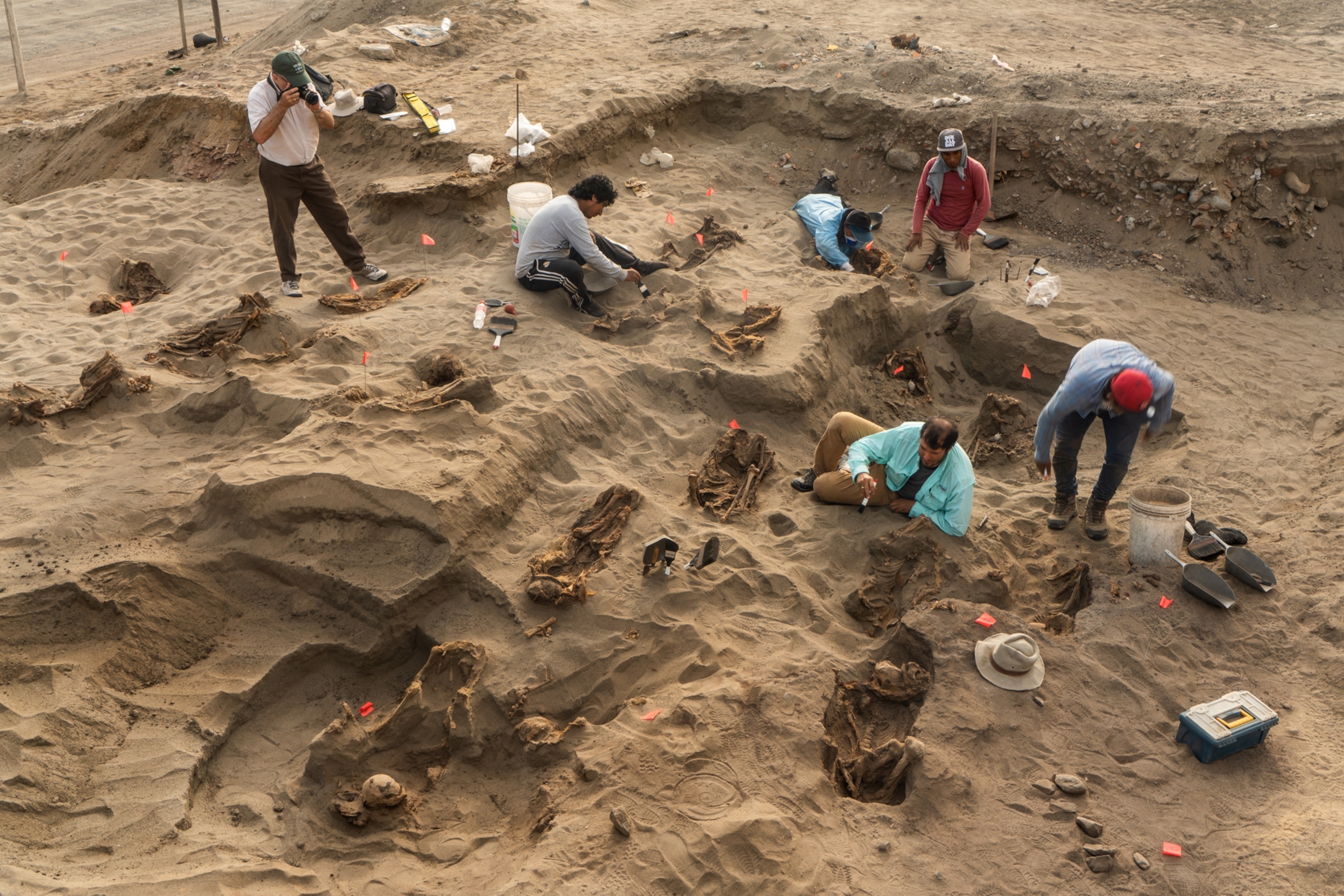
After examining the remains from Huanchaquito, Verano confirmed that the children and animals were deliberately killed in the same manner—with a horizontal cut across the sternum, likely followed by removal of the heart. He found the consistency of the cut location, as well as the absence of any “hesitation marks”—stop-starts of the knife blade—on the bones especially striking. “It’s ritual killing, and it’s very systematic,” he said.
But reconstructing events at Huanchaquito is difficult, mainly because archaeologists and historians know very little about the Chimú. Theirs may be the greatest empire that few have ever heard of, bookended in history by two civilizations that loom much larger in the popular imagination: the Moche, whose stunning murals depict the bloody sacrifice of war captives, and the Inca, who vanquished the Chimú around 1470, only to be conquered by Spanish invaders little more than 60 years later.
The Chimú left no written records, so other than archaeological findings, what little is known of them comes from Spanish chronicles. Those accounts claim that the Inca sacrificed hundreds of children upon the installation or death of a king—an assertion for which there is as yet no archaeological evidence—but they offer no hint that the Chimú practiced child sacrifice on a similar scale. “Until now, we had no idea that the Chimú did anything like that,” Verano says, referring to the unprecedented number of victims. “It’s the luck of archaeology.”

One major clue to what happened at Huanchaquito is the thick layer of ancient, dried mud in which the sacrificial victims were buried. Deep mud means heavy rain, and on the arid coast of northern Peru, “such rains usually only come with El Niño,” Prieto explains.
Chan Chan’s population was sustained by carefully managed irrigation systems and coastal fisheries, both of which could have been thrown into disarray by the higher sea temperatures and heavy downpours associated with the climatic event. A severe El Niño, the researchers theorize, may have shaken the political and economic stability of the Chimú kingdom. Its priests and leaders may have ordered the mass sacrifice in a desperate attempt to persuade the gods to stop the rain and the chaos.
“This number of children, this number of animals—it would have been a massive investment on behalf of the state,” Prieto says.

Jane Eva Baxter, an anthropology professor at DePaul University who specializes in the history of children and childhood, agrees that the Chimú may have considered their children among the most valuable offerings they could present to the gods.
“You’re sacrificing the future and all that potential,” she says. “All of the energy and effort that’s gone into continuing your family, continuing your society into the future—you’re taking that away when you take a child.”
Offering children also may represent an evolution in the way pre-Columbian societies in northern Peru sought to win favor in the spirit world.
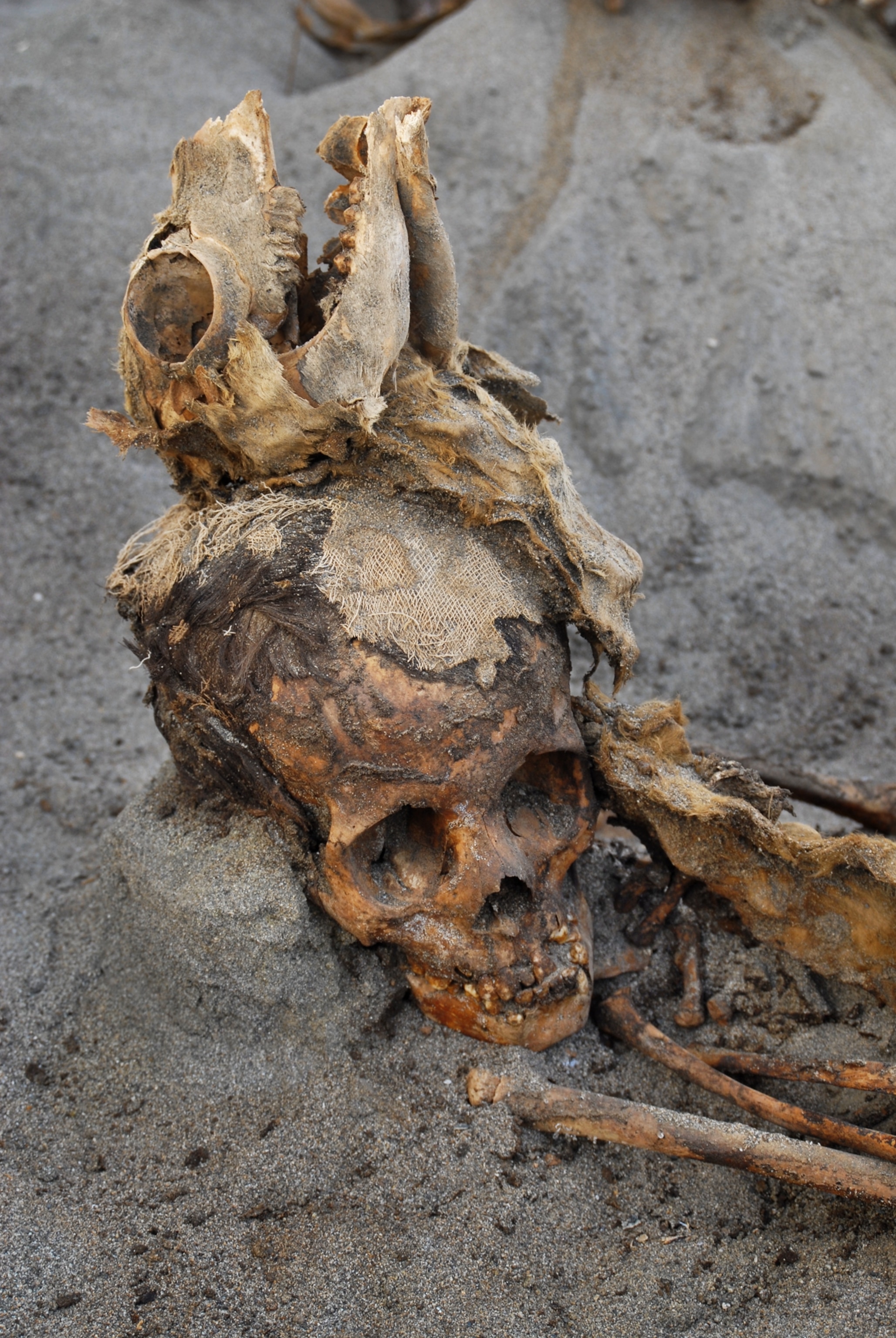
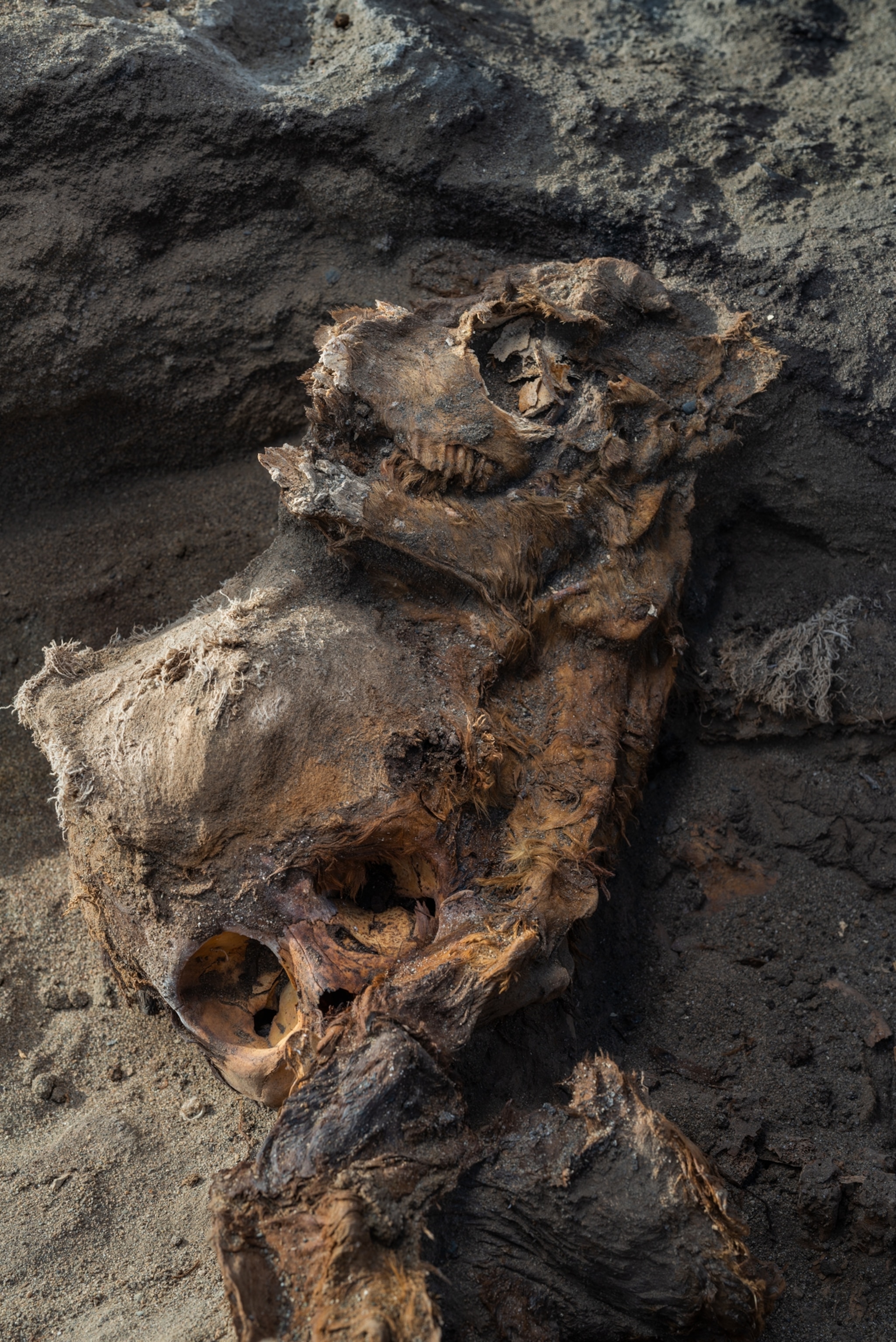
Haagen Klaus, a professor of anthropology at George Mason University, points out that child sacrifice became more common in the region after the fall of the Moche (the culture that preceded the Chimú) in the ninth century. The Moche sacrificed large numbers of captive adult warriors at their Temple of the Moon, just a few miles and a few centuries distant from where the Chimú later ruled at Chan Chan.
“With the end of the Moche, the ideas got old, and the rituals lost their potency,” Klaus says. “There seems to be something much bigger that the people at Chan Chan got plugged into. Sacrifices are very carefully constructed negotiations and forms of communication with the supernatural. It’s the Chimú interacting with the cosmos as they understood it.”
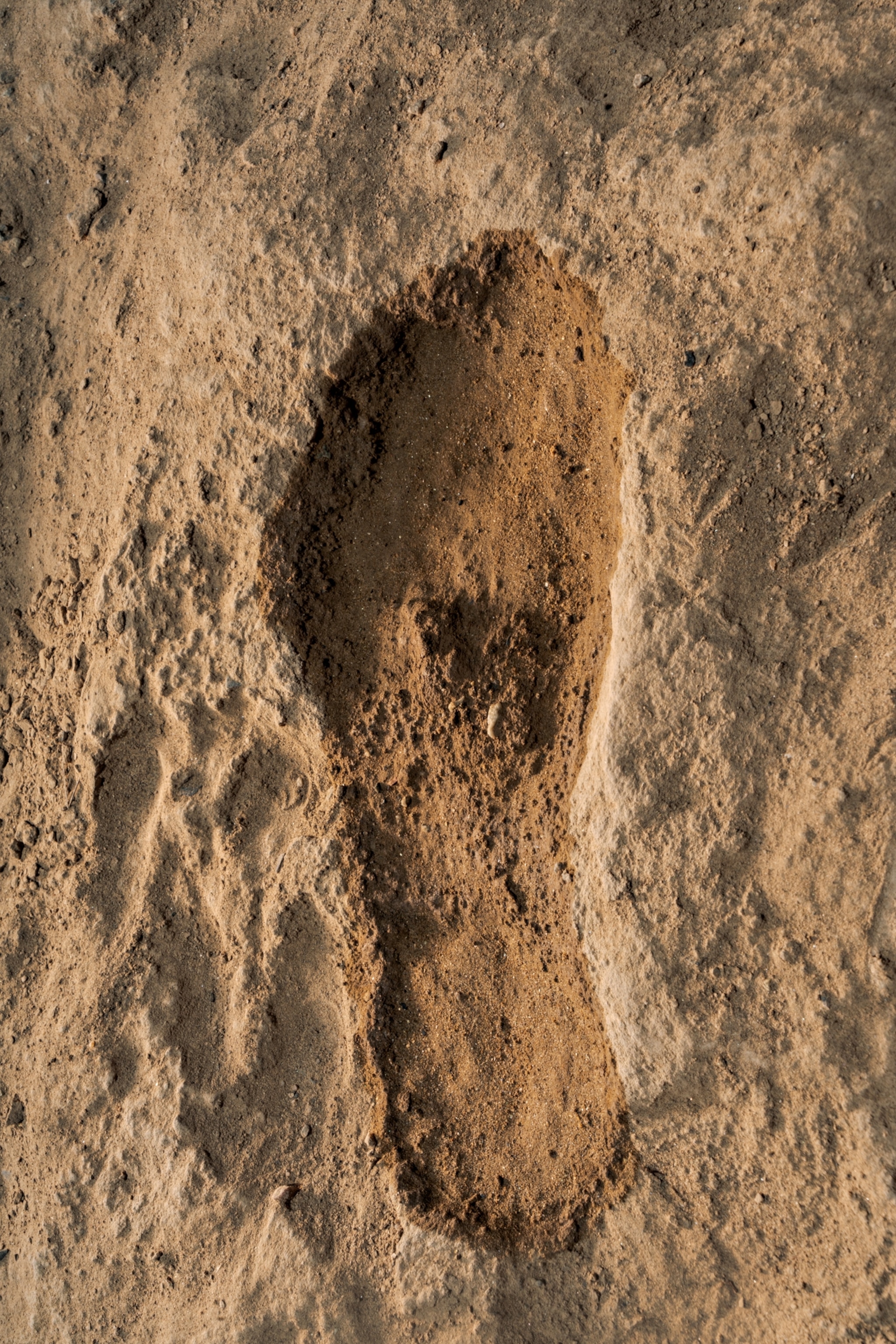
The need to placate the spirits and stop the rain may have been urgent, but the mass sacrifice itself appears to have been carefully orchestrated. The young llamas—another important resource, culled from state-owned herds—seem to have been specially selected for the event.
Nicolas Goepfert, an expert on camelids at France’s National Center for Scientific Research, analyzed the well-preserved coats of the four-legged victims. He determined that the Chimú likely chose particular animals to sacrifice based on their age and color. Dark brown llamas often were interred together with light brown llamas, for example, while no white or black animals were sacrificed.
“We know from the Spanish chronicles that the Inca had a color code for sacrificial llamas,” Goepfert explains. “Maybe the Chimú selected them that way as well.”
How the children were chosen for their terrible fate remains a mystery. Scientific studies show that those killed at Huanchaquito were both boys and girls, all of whom appear to have been well cared for, with little sign of malnutrition or disease. Isotopic analysis of their teeth suggests that they came from many regions of the sprawling Chimú Empire. The backs of some of the children’s skulls are unnaturally elongated, evidence of a deliberate cranial modification that was practiced only in the remote highlands.
But many questions remain unanswered. Did the children come from elite families or poor ones? Without burial goods, it’s impossible to know. How many families lost children in the sacrifice? Were they given up willingly in the face of impending disaster, or let go under compulsion? For now, archaeologists have no answers. But telltale signs and forensic clues are helping them reconstruct the sequence of events.
The pattern of footprints and tracks preserved in the dried mud indicates that there was a formal procession to the sacrifice site. The prints of small bare feet, as well as those of four-legged animals being dragged against their will, make Prieto and Verano think the victims were led alive to their graves, where they were killed. A lack of insects in the remains means the children were carefully wrapped in shrouds and promptly buried alongside the llamas.
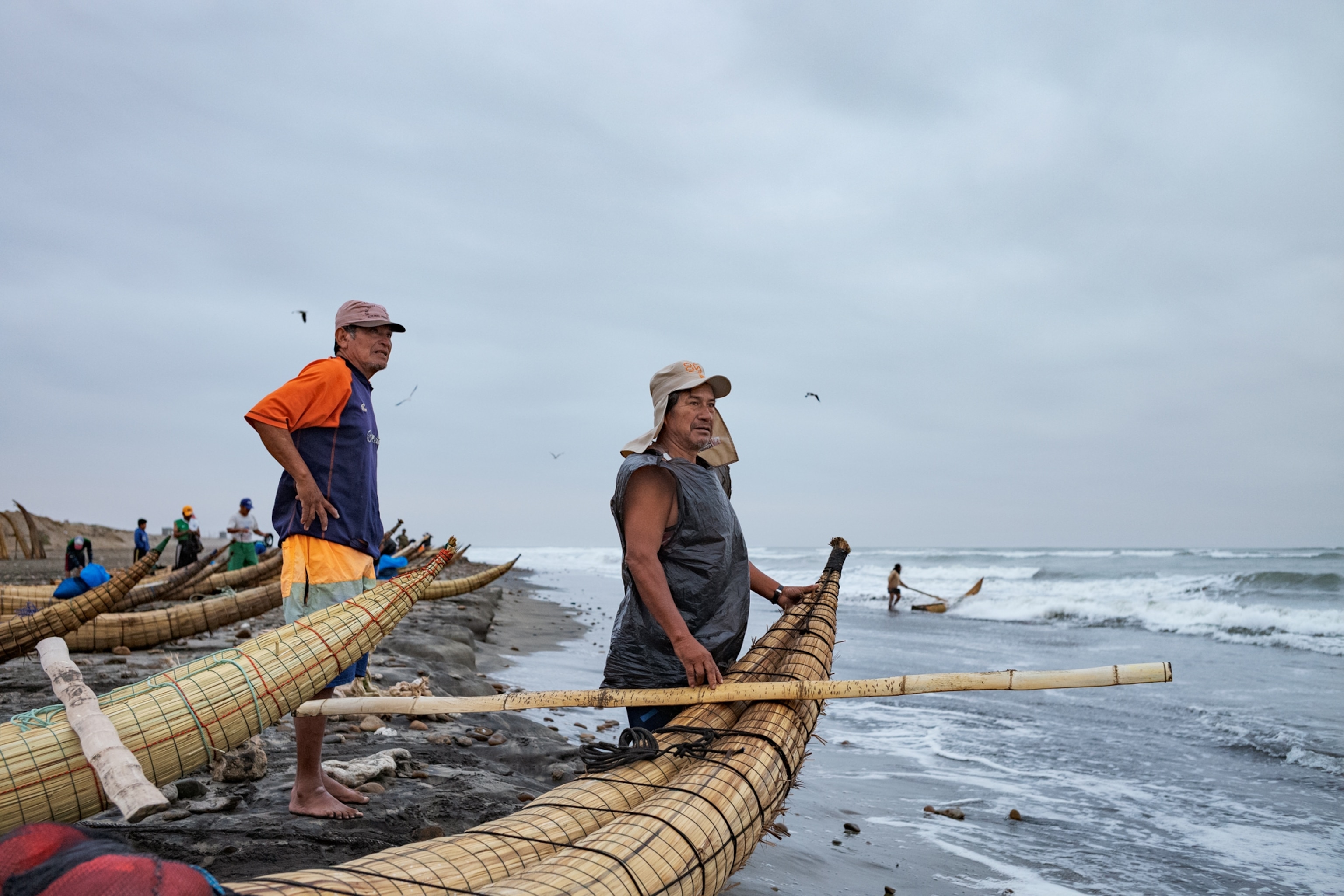
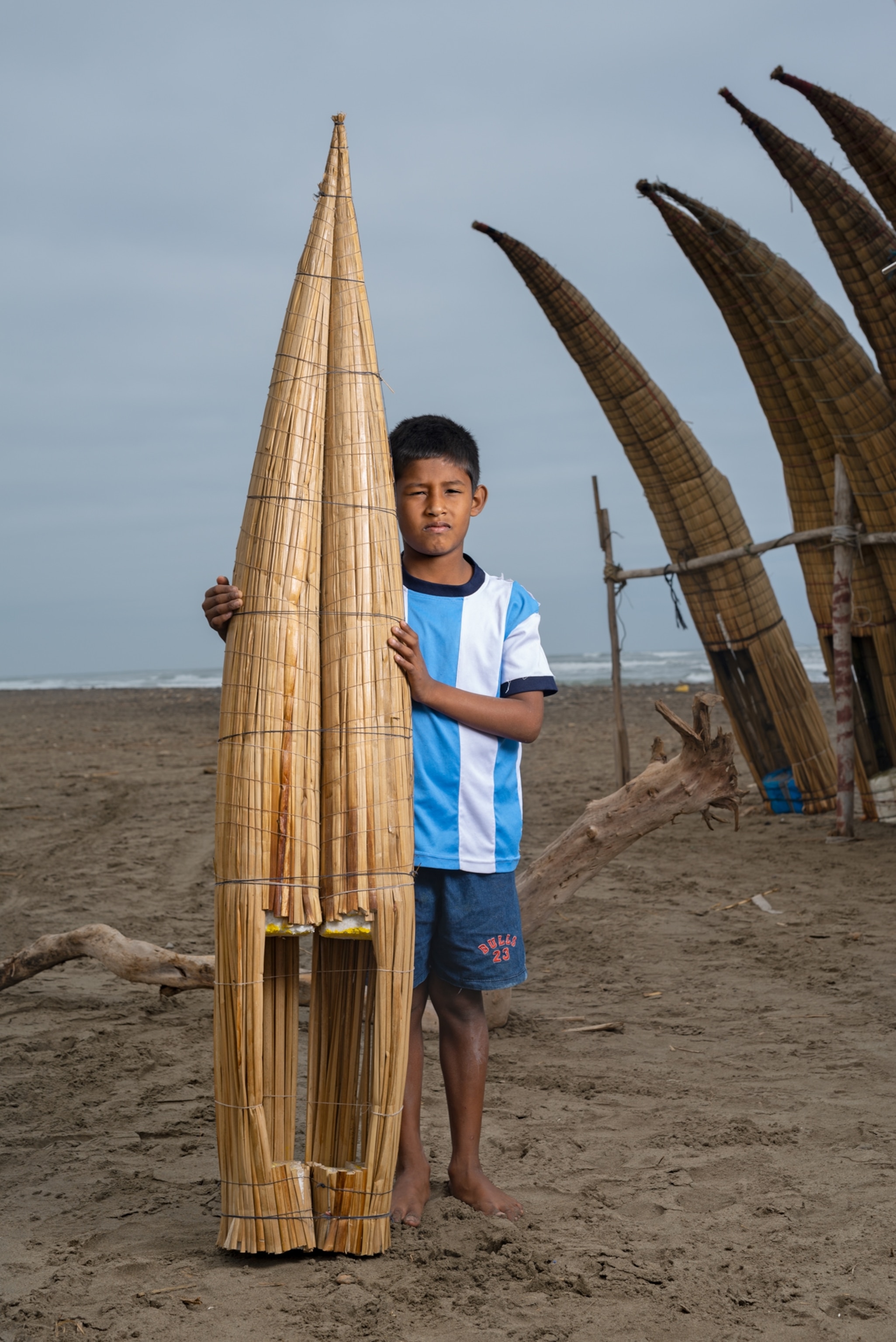
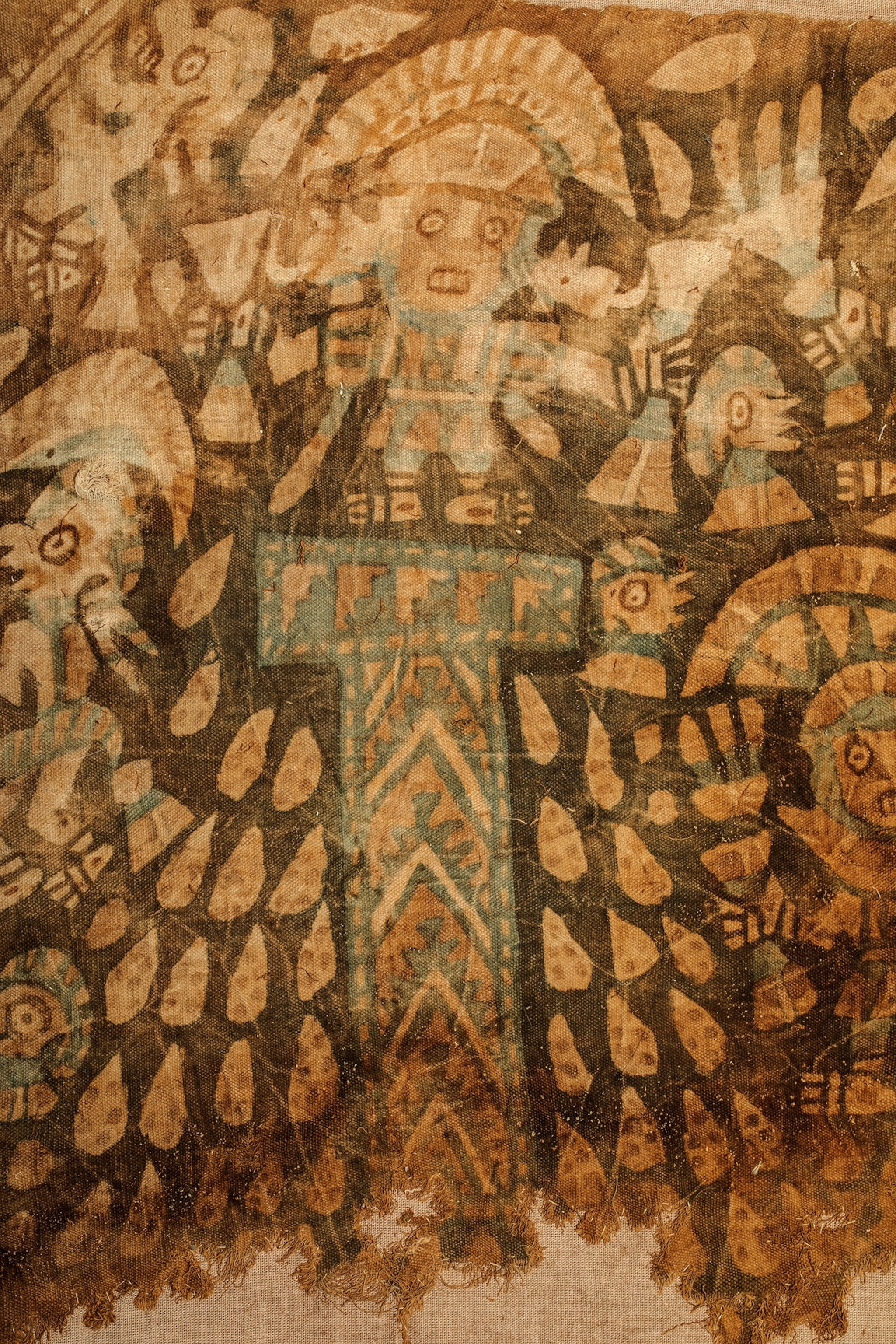
That dreadful task may have fallen to two adult women who were killed by blows to the head and buried among the children on the northern side of the site. Nearby were the remains of an adult male, lying on his back under a pile of rocks. His unusually robust build leads the archaeologists to wonder if he might have been the executioner.
Did the costly offering bring relief from the flooding rains? It’s impossible to know, but the disturbing event may be a window into the last, desperate years of a dying empire.
“Here you are when you have the most to lose, and you’re giving the most,” Baxter says. “It speaks volumes about where the Chimú were at this moment and in this place.”
Within decades, Inca warriors would arrive at the walls of Chan Chan and depose the Chimú.
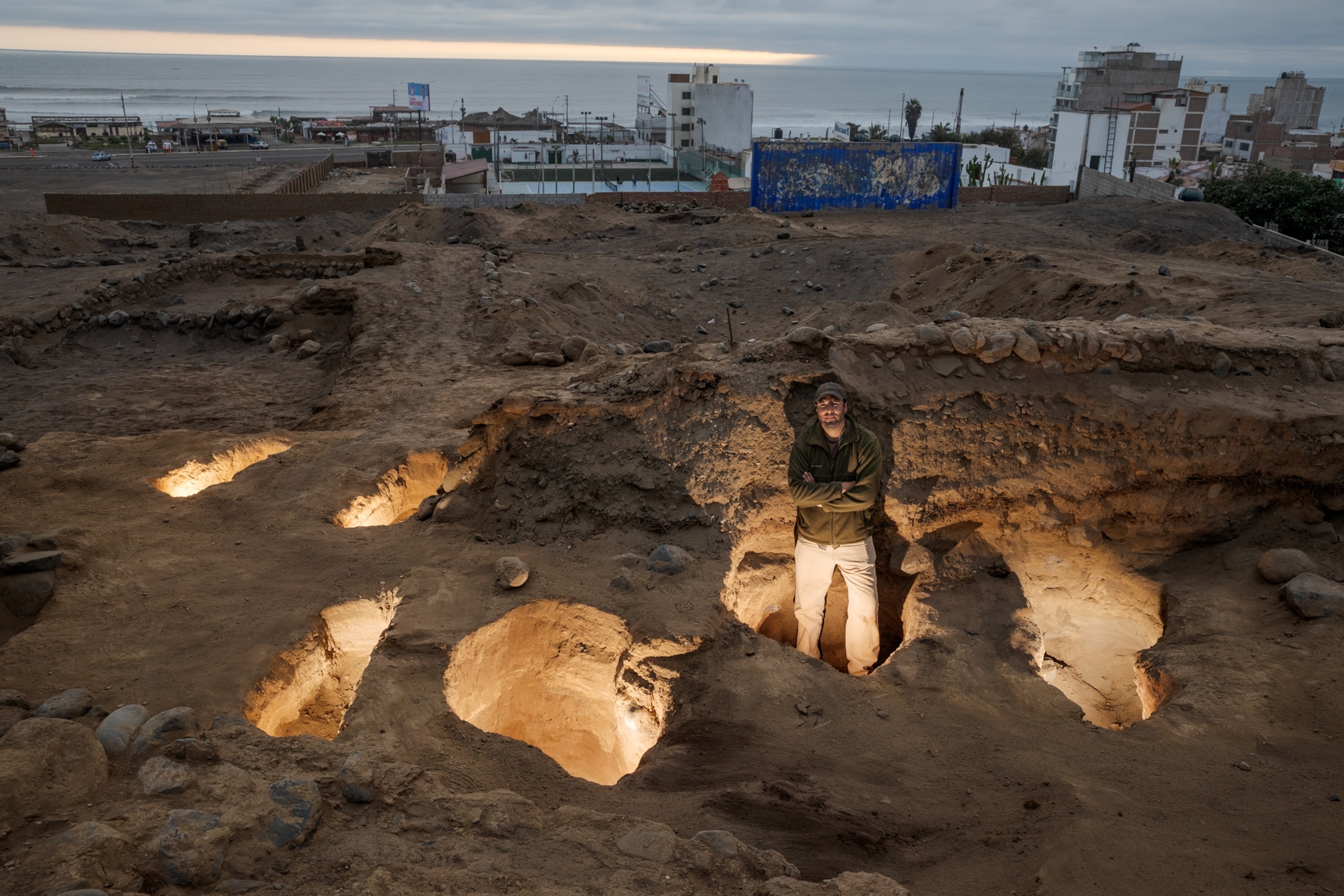
Months after wrapping up the excavation at Huanchaquito, Prieto sends word that he has uncovered more sacrificed children and llamas at a location known as Pampa la Cruz. The new site is another empty lot on a high hill, only this one is crowned by a large wooden crucifix, hence its name. The cross was erected more than a century ago by a grateful fisherman who survived near drowning.
A bit farther south along the coast, a new monument built to honor the sacrificial victims of Huanchaquito features a statue of a young boy and a llama surrounded by freshly planted palm trees, one for each human victim. The crest of Pampa la Cruz offers an unobstructed view west to the sea, and when I visit during the Peruvian winter, a few daring surfers are braving the cold waters. By now Prieto has uncovered the remains of another 132 Chimú children, most executed with the familiar horizontal incision across the chest and buried in simple shrouds. His running tally of victims found at the two sites now stands at 269 children, three adults, and 466 llamas.
But what’s throwing Prieto for a loop are nine burials clustered at the top of the hill and dug into the ruins of an earlier Moche-era shrine facing the sea.
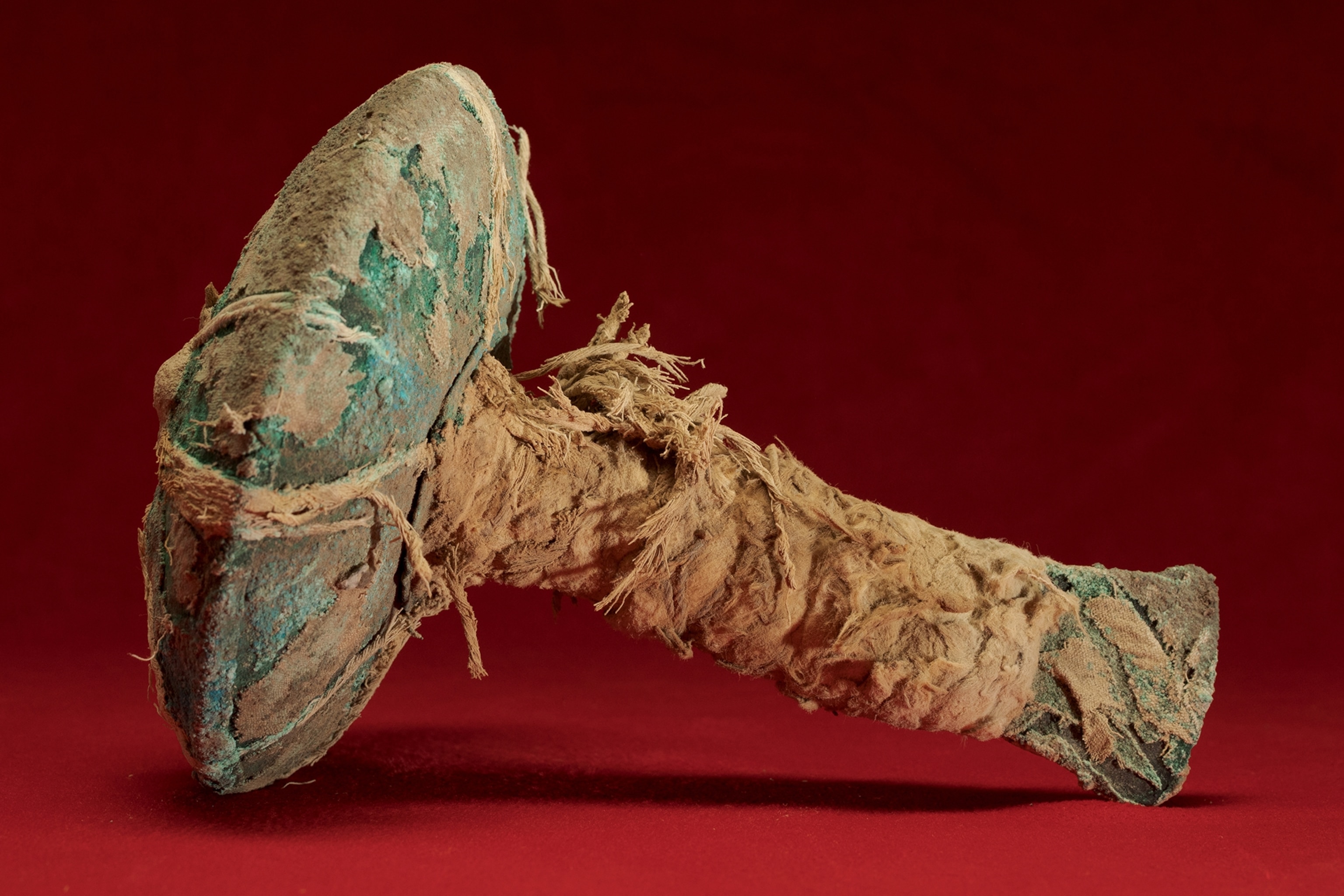
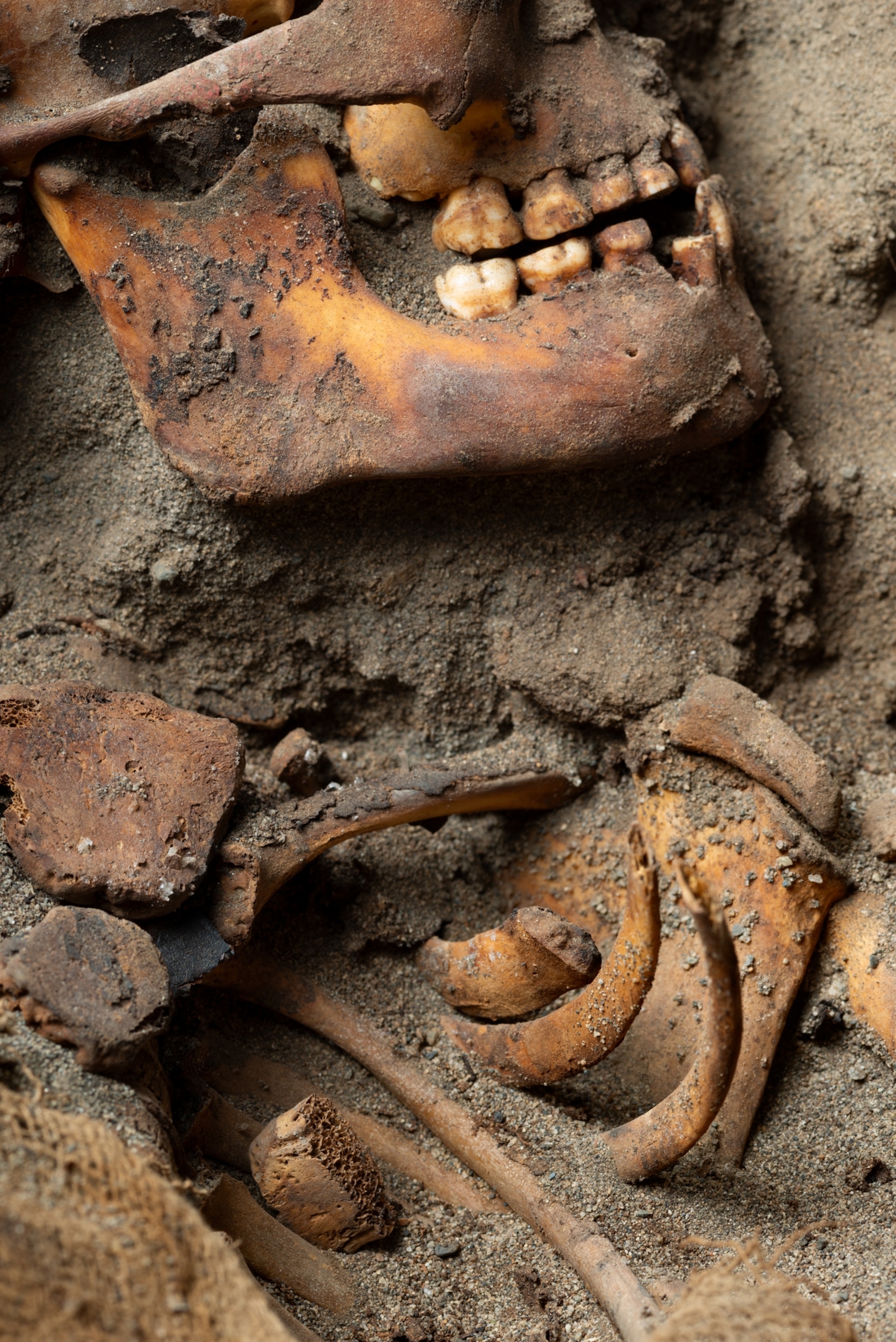

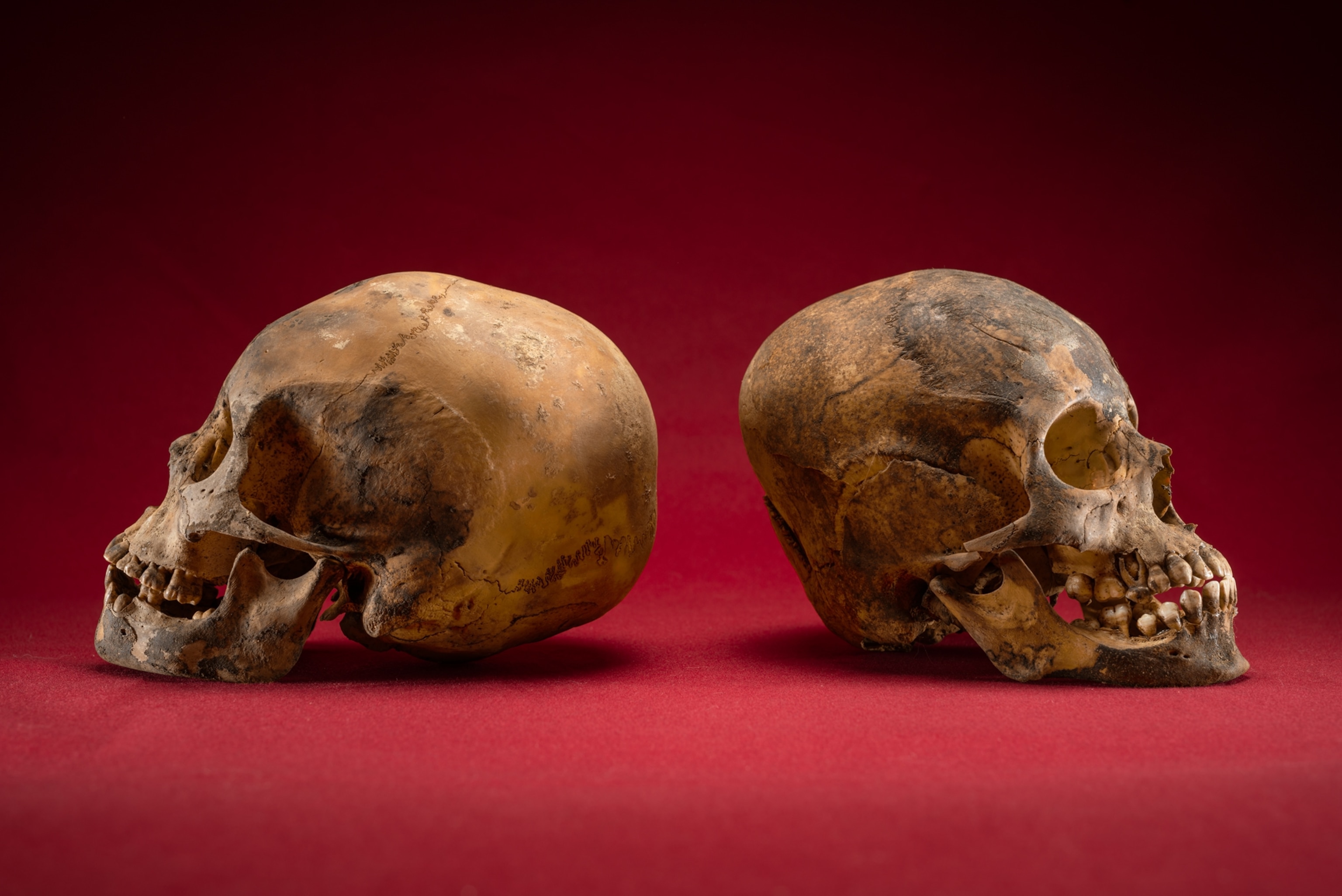
These graves also hold Chimú children, but they were buried in robes and elaborate headdresses adorned with parrot feathers and carved wooden ornaments. None of the nine victims bear the usual cut marks to the chest, but the skull of one was severely damaged by what must have been a lethal blow to the head.
During the week that I’m at the site, Prieto unearths an enormous copper knife with a rattle on one end that’s unlike anything previously discovered by any archaeologist. “My god, what is this?” he blurts out. Could it be the very knife used to kill the children buried here? The possibility is both thrilling and appalling.
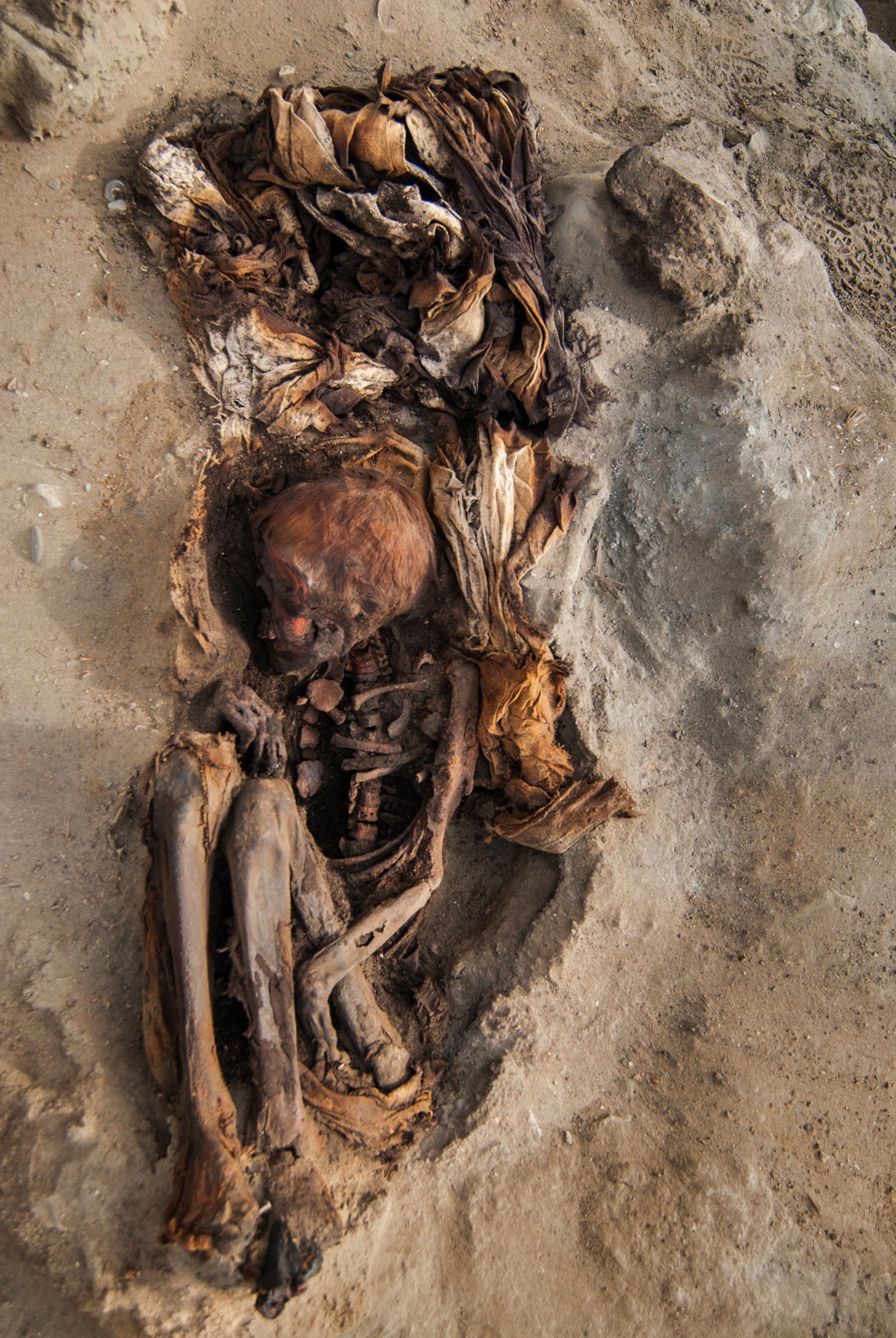
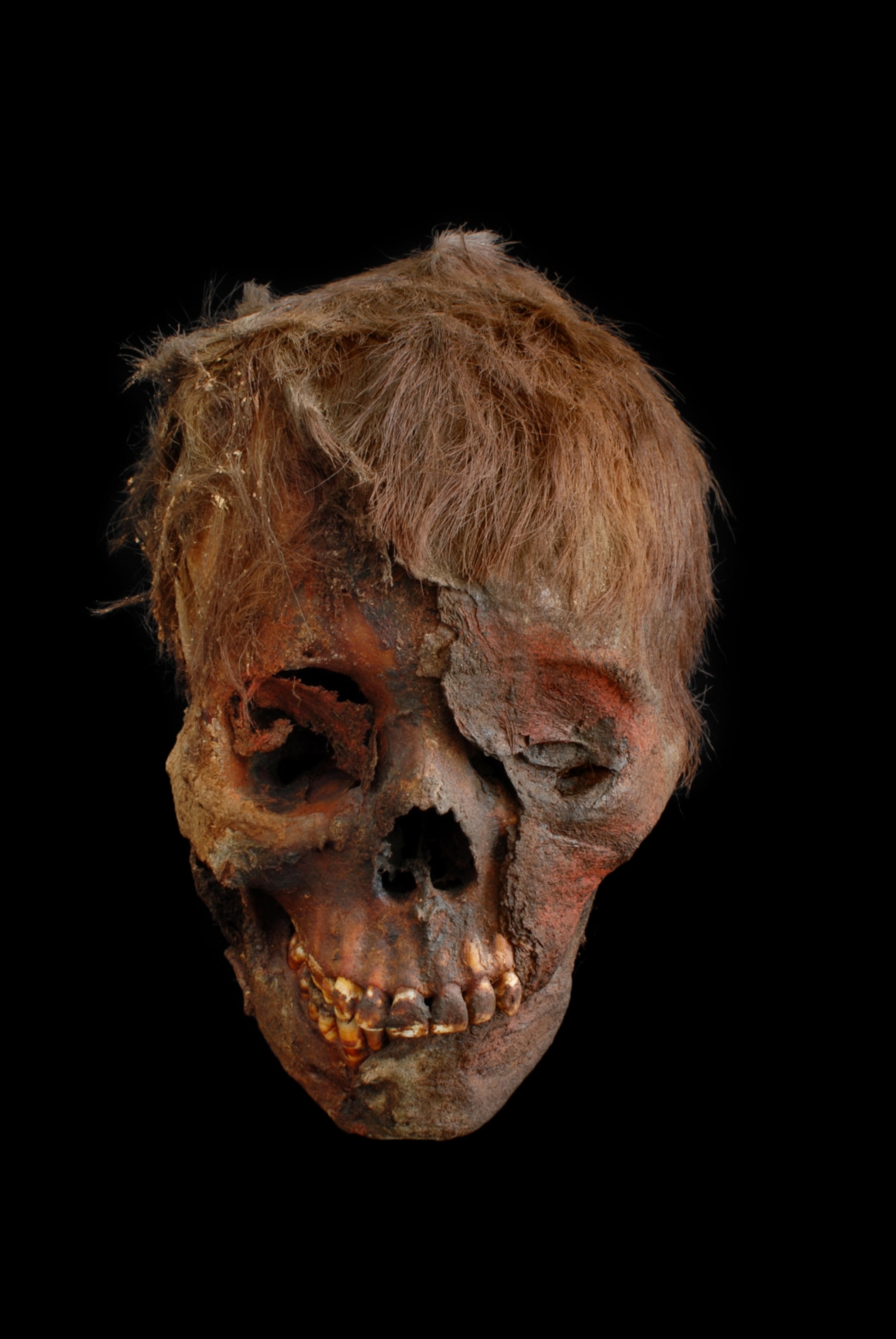
Prieto is still struggling to understand the motivation and logic behind the mass killings. But one afternoon as he breaks for lunch, he shares an old story that casts a more charitable light on the Chimú. The colonial chronicles describe an event following the Inca and Spanish conquests in which Don Antonio Jaguar, the leader of the now beleaguered Chimú, escorts his new Spanish overlords to a cache of priceless treasure.
The legend in Huanchaco, Prieto says, is that Don Antonio pointed them to the peje chico—the lesser treasure—and that the peje grande has yet to be discovered.
“I’d like to think that the children are the peje grande, that they were what was most precious to the Chimú,” Prieto says thoughtfully, pushing rice around his plate with a fork. “Their lives must have been worth more than gold.”
The nonprofit National Geographic Society helped fund fieldwork for this article.



